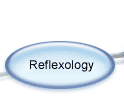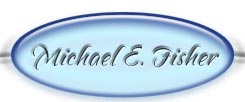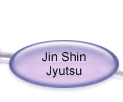   |
   |
   |
     |
Applied Kinesiology
Resonance Repatterning | About RR | FAQ's | Applied Kinesiology | Radio Interview
Using Muscle Checking The Resonance Repatterning Institute teaches the muscle checking tool for two specific uses: 1. To identify negative resonance patterns that stop us from achieving our goals, and to confirm that these patterns have been transformed at the end of the session 2. To identify the modalities required for transforming the negative resonance patterns leading to quantum change In a pilot research study conducted in 2004, 95% of the responding clients reported feeling "better to a lot better" after their Resonance Repatterning sessions. Most people expressed amazement how the muscle checking tool identified and transformed their issues, and unconscious patterns, because it went beyond anything the practitioner could have known about them. In the Resonance Repatterning system we do not use muscle checking to measure if something is right or wrong or if something is true or false. We can only check what we resonate with. For this reason, it is not used for prophecy, as a psychic tool, for medical diagnosis, or for confirming prescriptive drugs. It is particularly important to avoid using muscle checking to identify whether past trauma or abuse occurred or with whom. If someone resonates with past trauma, it is the resonance that needs to be transformed. Applied Kinesiology known as Muscle Checking Other common name(s): muscle checking, manual muscle testing The term "kinesiology" as used here is that which is connected to Applied Kinesiology or Specialized Kinesiology and always includes manual muscle testing. It is not to be confused with another definition of 'kinesiology' that is taught in colleges and is defined simply as "the branch of physiology that studies the mechanics and anatomy in relation to human movement". Kinesiology is a 'holistic' system, because it looks at the whole person (not just at selected parts). When you step on a cat's tail, it's the other end that screams! Kinesiology looks at all types of stress which can cause dis-ease. Applied kinesiology is usually used for evaluation purposes to discover any problems, positive intentions, and underlying unconscious patterns that we resonate with at a physical, mental, emotional or spirit level. Kinesiology is a boon to any type of healer. As people get more and more specific communication back from their body, they usually begin to take responsibility for their own health and have more knowledge of how to do that. Many people don't feel like giving up harmful habits because someone else has told them that they should - but when their own body starts telling them in no uncertain terms that those habits are weakening it, then that is another matter. The basis of applied kinesiology is that any problem is accompanied by weakness in a muscle indicator, usually the arm. Applied kinesiology or muscle checking is sometimes used to determine whether a particular food or other substances weakens or strengthens a person. The food or substance may be held in the hand as a muscle is tested. This would also apply to vitamins or supplements. Applied kinesiology may also be used to check responses to situations or people. This is done by muscle testing as the client vocalizes the statement or situation. Many people's physical problems start with something out of balance in the digestive system, which is hardly surprising when you see what most people consider to be food - Muscle testing shows that many of the foods that we regularly eat have negative effects on the body. Practitioners claim that a weak muscle response may also be caused by a number of internal energy disruptions at a physical, mental, emotional or spirit level. Kinesiology is a brand new branch of science which was developed by doctors, chiropractors and acupuncturists in the U.S.A. They pooled their knowledge and added it to Chinese medicine to develop a totally new technology which is amazingly efficient at balancing the body so that it can return to excellent health, energy and emotional strength. It stands apart from any other type of health technology largely due to its use of revolutionary muscle testing. Applied kinesiology procedures are considered safe. Relying on this as a diagnostic method and avoiding or delaying conventional medical diagnosis and treatment, may have serious health consequences. Available scientific evidence does not support the claim that applied kinesiology can diagnose or treat cancer or other illness. One of the reasons why some types of alternative treatments do not work as well on some people as they do on others, or have lasting effects, is because the right modality has not been used, that is why Resonance Repatterning has between 60 to 70 different unconscious patterns. It appears by simple observation that most people do not have all of these basic patterns in place. Mental approach when testing If the subject has strong opinions about something being tested, this can influence the outcome of the test. It can also affect the result if the practitioner allows their opinions to be a dominant thought. It is essential therefore for both the tester and the subject to maintain a neutral mind-set at the actual moment of the test. People will often say that their intuition tells them what is best for them. In this regard Applied Kinesiological testing shows that this is an unreliable guide. The mind does not help in its expression of preferences to attain a correct diet for you. This can be shown when people say, I like this; I know it makes me strong, and they test weak. Or when they say, I hate that, and it does not suit me, and they test strong! Continuing with regular sessions is important even when the client starts to feel better, if they are to avoid going back to square one, and waste the time and money they have spent. Here are two examples: Ante-Natal Trauma Pregnant women under emotional, dietary, structural or energetic stress produce stressed babies. Smoking, alcohol, drugs, prescription items, gas and air, epidural injections, all have a deleterious effect on the baby and its immune system. A Resonance Repatterning Practitioner can do a session using the mother as a proxy for the baby in utero. It is important for the unborn child to feel welcomed, loved and expected. So for example we use a statement- "I feel welcomed, loved and expected. My presence brings pleasure to my parents; I welcome my parents with pleasure." Breathing - Diaphragm Shallow breathing does not stimulate digestion as it does not massage the organs with every breath as does diaphragmatic breathing. However, with Applied Kinesiology by Balancing the Diaphragm lymphatic's and the Lung Meridian, one can teach diaphragmatic breathing. The history behind Applied kinesiology Dr George J. Goodheart's original research on the subject was given wider application by Dr John Diamond. Diamond determined that this positive or negative response occurs with stimuli that are both physical and mental. The test itself is simple, rapid and relatively fool proof (unless the client goes to the left analytical side of the brain, which may interfere with the process). A positive muscle reaction, an "On" response occurs in response to a statement that the client resonates with. We Do Not Deal with Truth, because for example the client may resonate with "I am so ugly" which is patently not true, but the client resonates with the statement. A Negative or "Off" response occurs when the client does not resonate with a Positive statement. At a deeper level this can go to an "Umbilically Off" Response. By the end of a session with Resonance Repatterning the client will be "Off" - no longer resonating with the Negative statements, and "On" for the Positive response that he/she or it, did not resonate with during the session. Originally, the ON/OFF muscular response was a medical procedure used as a way to determine if nerve impulses were being received by a certain muscle. This procedure is still in use by some medical specialists and by physical therapists. Other creative uses of Applied Kinesiology muscle checking have emerged over the last thirty years leading to the development of a number of Kinesiology-based healthcare systems. The kinesthetic on/off response is even described in Malcolm Gladwell's popular book "Blink". Muscle checking began with the physical body (as in the medical practice). The Resonance Repatterning system recognizes that our entire subtle energy fields are linked through our autonomic nervous system, and that muscle checking can be used in a much larger way. It is a tool for accessing not only meridian flows and brain hemisphere integration, but also unconscious belief systems and the entire holographic range of chakra and subtle energy fields. This expanded version of muscle checking is now called Energy Kinesiology and is an essential tool in the Resonance Repatterning™ system. |
19-5840 Dover Crescent Richmond, BC V7C 5R7 Canada - Google Map
Tel: 604-285-7013
All material copyright ©2015 by Michael E. Fisher
